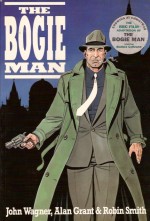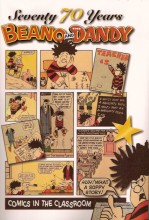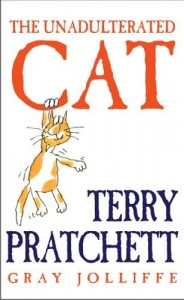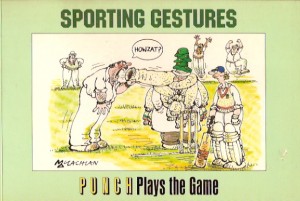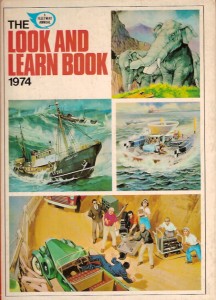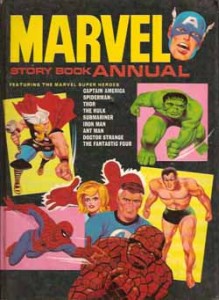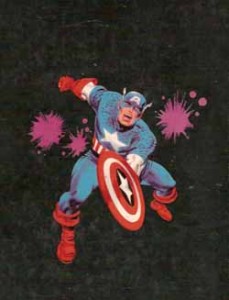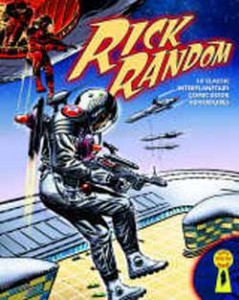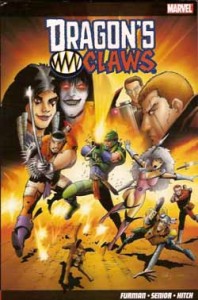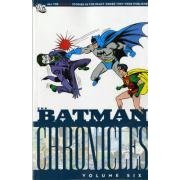
By Bob Kane & various (DC Comics)
ISBN13: 978-1-84576-963-5
This sixth volume of Batman, re-presented as per the original release schedule, encompasses Batman #10-11, Detective Comics #62-65 and World’s Finest Comics #5 and #6. America had entered World War II by this period and the stories – especially the patriotic covers – went all-out to capture the imagination, comfort the down-hearted and bolster the nation’s morale. One of the very best (and don’t just take my word for it – type “World’s Finest covers” into your search engine and see for yourselves – go on, I’ll wait) designed and executed by the astounding Jerry Robinson leads off this Bat-box of delights.
‘Crime takes a Holiday‘, (World’s Finest Comics #5, Spring, 1942) by Bill Finger, Bob Kane and Jerry Robinson, is a canny mystery yarn as the criminal element of Gotham “down tools”. Naturally it’s all part of a devious master-plan and just as naturally our heroes soon get to the bottom of it. The same creative team also produced ‘Laugh, Town Laugh!’ (from Detective Comics #62 April 1942) wherein the diabolical Joker goes on a murder-spree to prove to the nation’s comedians and entertainers who actually is the “King of Jesters”.
Batman #10 (April-May 1942) follows with another four classics. ‘The Isle that Time Forgot’ written by Joseph Greene, finds the Dynamic Duo trapped in a land of dinosaurs and cavemen, whilst ‘Report Card Blues’ also with Greene scripting, has the heroes inspire a wayward kid to return to his studies by crushing the mobsters he’s ditched school for. Robinson soloed and Jack Schiff typed the words for the classy jewel caper (oh, for those heady days when Bats wasn’t too grim and important to stop the odd robbery or two!) ‘The Princess of Plunder’ starring everyone’s favourite Feline Femme Fatale Catwoman, and the boys headed way out West to meet ‘The Sheriff of Ghost Town!’
This highly impressive slice of contemporary Americana came courtesy of Finger, Kane and Robinson, who also produced ‘A Gentleman in Gotham‘ for Detective Comics #63, as the Caped Crusader had to confront tuxedoed International Man of Mystery Mr Baffle, and the Crime Clown again in ‘The Joker Walks the Last Mile’ (Detective Comics #64 June 1942).
Obviously he didn’t as he was cover-featured and lead story in Batman #11 (June-July 1942). Bill Finger is credited as writer for ‘The Joker’s Advertising Campaign’ as well as the other three stories. ‘Payment in Full’ is a touching melodrama about the District Attorney and the vicious criminal to whom he owes his life, ‘Bandits in Toyland’ explains why a gang of thugs is stealing dolls and train-sets and ‘Four Birds of a Feather!’ finds Batman in Miami to scotch the Penguin’s dreams of a crooked gambling empire.
There’s another cracking War cover and brilliant Bat-yarn from World’s Finest Comics #6 (Summer 1942) in ‘The Secret of Bruce Wayne!’ as Greene and Robinson provide a secret identity exposé tale that would become a standard plot of later years, and the volume ends as it began with a superb patriotic cover (this one by Jack Kirby and Joe Simon for Detective Comics #65) and a classic tale as Jack Burnley and George Roussos illustrate Greene’s poignant and powerful North Woods thriller ‘The Cop who Hated Batman!’
This tremendously inviting series of Golden Age greats is one of my absolute favourite collected formats: paper that feels comfortingly like old newsprint, vivid colours applied with a gracious acknowledgement of the power and limitations of the original four-colour printing process and the riotous exploratory exuberance of an industry in the first flush of hyper-creativity.
If only other companies such as Marvel, Archie and the rest had as much confidence in their back-catalogue as to follow suit. Who could resist economical, chronologically true collected editions of Bill Everett’s Sub-Mariner, Airboy, Dick Briefer’s Frankenstein; even Bark’s Duck stories, EC editions or CC Beck’s original Captain Marvel?
Certainly not me, and probably not you neither…
© 1941-1942, 2008 DC Comics. All Rights Reserved.

